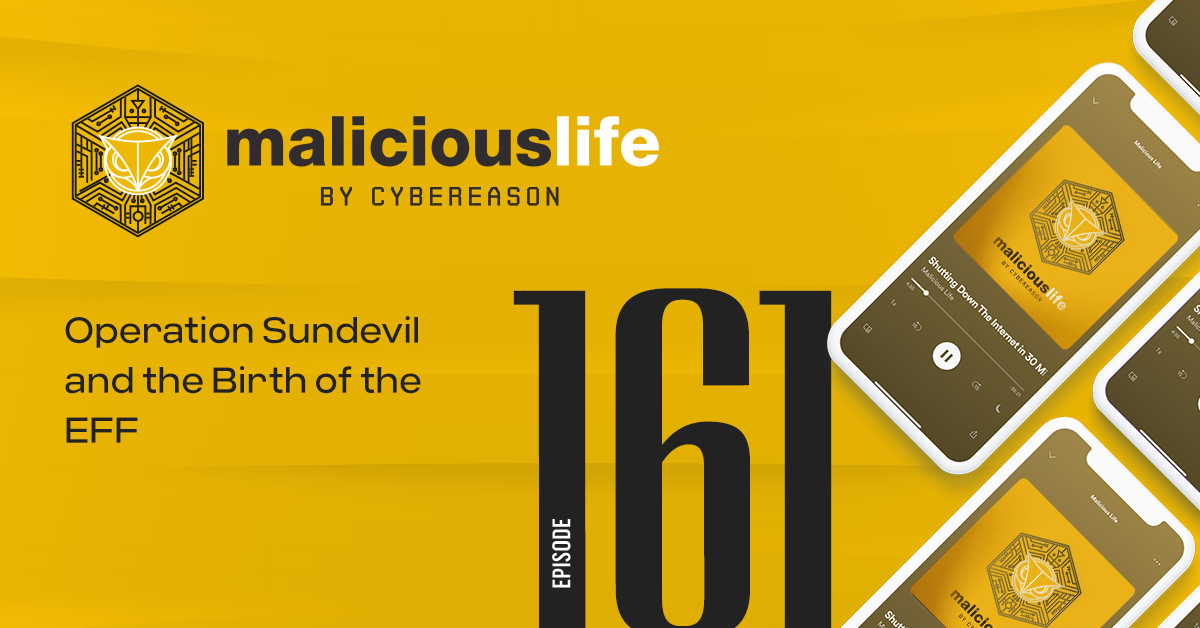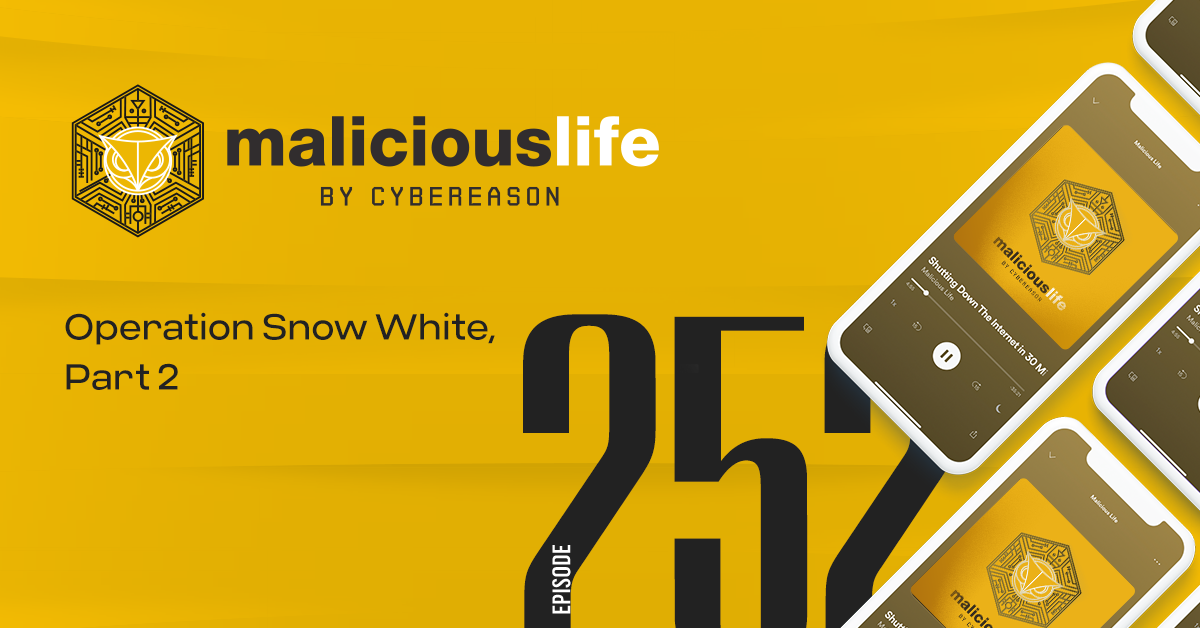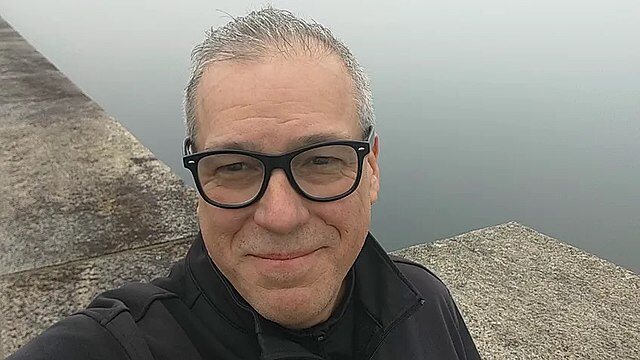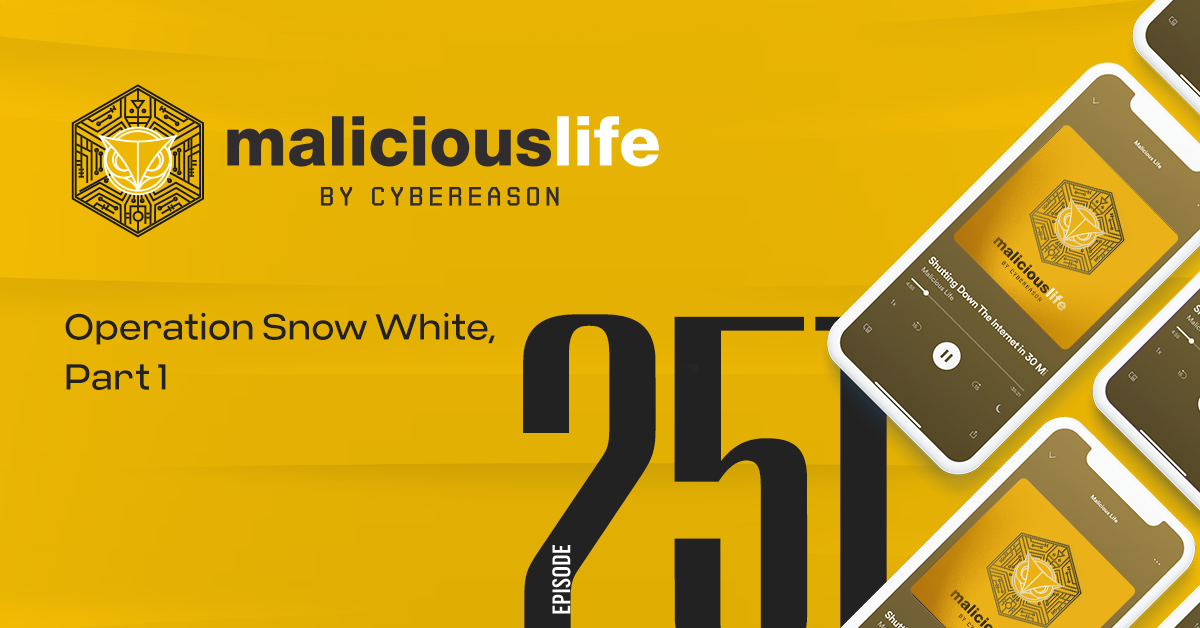The Bug
It was a mission that required the very best secret agents the Church of Scientology had.
Back in the fall of 1973, the head of Scientology’s global espionage operation, Snow White, had received intel indicating that the Washington D.C. office of Interpol possessed potentially harmful information about L. Ron Hubbard, Scientology’s founder. “It is important that we get cracking and obtain these files and I leave you to work out how,” she told one of her associates.
For a whole year, the church failed to obtain those files. And so, on this October 30th, 1974, a man with a bushy, brown mustache and curly hair boarded a plane from Los Angeles to Washington D.C.
He was known by a nom de guerre, “Don Alverzo.” Rumor had it that “Don” used to fly helicopter missions in Vietnam. He was known as one of the best, most experienced agents in the Church of Scientology’s spy wing, the Guardians Office. Recently, for example, he’d broken into a law firm representing a newspaper that’d been investigating the church, copying documents under the cover of night for three days straight. His partner’s heart would race during those nights, but Alverzo always seemed to be unphased. In fact, his partner said, he was usually smiling.
Now Alverzo was flying to meet with the church’s top agent in the nation’s capital, a 24-year-old named Michael Meisner.
Where Alverzo was cool and mysterious, Meisner was young and ambitious. It’d been just four years since he’d first forayed into Scientology, so eager to join that he dropped out of college for it, just before his final exams. Since then, he’d risen fast up the ranks. Two years after joining, he was running its mission in Urbana, Illinois. He was recruited as a Guardian secret agent the following year, spending months training in all of its covert operations techniques: surveillance, recruiting agents, infiltrating enemy lines, blackmail. He was quickly appointed head of internal security in D.C. — where his job was to root out any infiltrators or “trouble sources” within Guardian ranks — and in 1974 he was promoted to “Assistant Guardian for Information in the District of Columbia.” Still in his early 20s, this made him the handler to secret agents placed inside of major U.S. agencies like the Drug Enforcement Agency, Department of Justice, and Coast Guard.
After Alverzo landed, he, Meisner, and two other agents convened at the Guardians HQ in Washington D.C.: a picturesque, four-story Georgian-style building at 2125 S Street, Northwest, between Phelps Place and Connecticut Avenue in the city’s Kalorama district. (Today it’s a condo building but, as a remnant of its history, it remains ominously blurred out from all angles on Google Maps.)
This meeting was urgent — they were running out of time, Alverzo explained. The Guardians Office leadership had recently learned that, in just two days’ time, a meeting was going to take place in a conference room on the fourth floor of 1111 Constitution Avenue, Northwest — the massive, stone-columned headquarters of the Internal Revenue Service — where Scientology was to be discussed.
They needed to know what would be said in that meeting. Alverzo had a plan.
Two days later, a Guardian secret agent named Mitchell Hermann walked into that IRS fourth floor conference room. Inside, against one wall, he plugged in an outlet splitter — the kind of thing you probably use at home or at work, for plugging multiple devices into a single electrical socket.
Hermann took note, too, that the room overlooked the driveway for the Smithsonian Museum of History and Technology across the street.
He exited the building, and got into a car. In the car was a Guardians Office secretary, and Don Alverzo. Together they pulled into the Smithsonian’s driveway, parked, and tuned an FM receiver to a very particular frequency — the frequency over which a bug, embedded into that outlet splitter, was broadcasting a live stream of the meeting between IRS attorneys.
When the meeting ended, Hermann entered the building once again to retrieve the bug. Conveniently, somebody had also left behind a copy of the meeting’s agenda. Don Alverzo flew back to Los Angeles with his bug, the IRS meeting agenda, and a tape recording. Another successful Snow White infiltration operation.
Tony Ortega, author of ‘The Unbreakable Miss Lovely’:
Scope of the Operation
“[Tony] At one point they were stealing documents by the yard, out of the government offices as part of this program, and just with impunity.”
For a sense of just how effective Scientology’s secret government spies were, consider that in May 1975, Gerald Wolfe — codename Silver — stole, photocopied, and then replaced 30,000 pages worth of documents, a stack that reached ten feet high. Imagine that across government bodies on multiple continents, and you start to get the picture.
“[Tony] The Guardian’s Office Snow White program was more sophisticated than the espionage agencies of many small countries.”
In all, the Church infiltrated 136 government agencies, embassies, consulates, and private organizations worldwide.
Project Horn
The runaway success of the program — the immense value of information they were able to steal — actually introduced an unexpected problem of its own: how could Scientology act upon or release any of the classified information they’d obtained, without revealing that they’d obtained it by some kind of illicit means?
Michael Meisner’s boss was early to recognize the problem. “We must be careful with this transcript,” he wrote in a letter to a colleague, following the 1974 bugging of the IRS. “There are new laws on this federally and a strong post-Watergate judicial climate.”
Another of Meisner’s colleagues came up with a solution, and tasked Meisner with implementing it. The colleague called it “Project Horn.”
The first phase of Project Horn involved stealing documents specifically unrelated to Scientology, this time about other organizations. With no sense of irony whatsoever, Meisner instructed his man in the IRS, Wolfe, to obtain files pertaining to another religious cult — the Unification Church of Sun Myung Moon — as well as the segregationist Bob Jones University in South Carolina. Like the Church of Scientology, these organizations were battling to retain their status as tax exempt religious organizations.
The easier part of Wolfe’s assignment was to obtain blank papers with IRS letterheads. With these, the Guardians would craft letters from an anonymous, disgruntled former IRS employee — a made up story, to provide a guise for releasing the documents they’d already stolen.
We’ll never know whether this crazy plan would’ve worked, though, because at the same time it was being worked out, the Guardians couldn’t help but steal more and more from their perceived enemies.
Target: Dodell
“[Tony] It was just endless. They just kept requesting these agents going to this office, to that office. One of the people they wanted to target was this Assistant US Attorney whose office was in Washington, DC, because he had handled a tax case against Hubbard.”
Nathan Dodell. The goal of “Project: Target Dodell” was to, quote, “render Dodell harmless” by getting him removed from his post.
“[Tony] [Well it] was a little tricky. How do you break into the office of an Assistant US Attorney?”
Except agents like Meisner and Wolfe knew perfectly well how to do it. As former Guardian trainees, they would’ve been drilled in just such a scenario. They would’ve written essays on, quote, “What could happen if Intelligence was not anonymous or elusive,” end quote, and been tested with such questions as the following:
General scene: person to restrain/remove Mr. Jones, employee in local government agency attacking the Org.
- Order hundreds of dollars worth of liquor in Jones’ name and have it delivered to his home to cause him trouble and make the liquor store owner dislike him.
- Call up Jones’ boss and accuse Jones of being a homosexual.
- Send Jones’ boss evidence of Jones accepting bribes on his job, with copies to police and local FBI.
Over the years, Guardians agents did all of those things to their targets. In Dodell’s case, Meisner and Wolfe seemed to have chosen a tactic more along the lines of option 3: find dirt on him, and spread it around.
Luckily their Guardias handbooks would have instructed them in the best practices for breaking and entering. Like the passage which begins, quote:
The first step in any breaking and entering job is casing. This consists of checking out the area to ascertain the possibilities for breaking into the premises….
The Library Incident
On the evening of a Friday, May 28th, 1976, like many evenings before it, Meisner and Wolfe parked by the D.C. IRS building where Wolfe worked, and entered into the nearby courthouse at 3rd Street and John Marshall Place, Northwest. It was around 7:30 PM. Carrying forged IRS ID cards, they signed in under the names “John M. Foster” and “T. Haake” — two individuals considered enemies of their church — then used a borrowed elevator key to go to the third floor, entering the D.C. Bar Association Library from a back door.
A few minutes later, when the coast was clear, they used a duplicated key to break into Assistant U.S. Attorney Dodell’s adjoining personal office.
[M]ake full use of all files of the organization to affect your major target. These include personnel files, Ethics files, training files, processing files and requests for refunds….
The nearest photocopier was a short walk away, so they had to go back and forth through the library. After around two hours, they’d copied a foot-high stack of documents.
Professionals at all times wear gloves during an operation. This prevents fingerprints being left behind by which the agents could be traced….
On this evening, as they returned from the photocopier to the attorney’s office, they were stopped.
“[Tony] There was like a day librarian and an evening librarian and the evening librarian saw them. He was like, What are you guys doing here? Right? Because they didn’t look like attorneys, you know, and he was suspicious. They gave him some story about how they were doing some legal research for something, and the librarian didn’t believe them.”
The nighttime librarian, Charles Johnson, told them not to come back again without permission from the head librarian.
Two weeks later, they returned: parked at the courthouse, signed in, elevator to the third floor, library. After showing Johnson the authorization they’d received from the head librarian, they headed to the back of the library, by Dodell’s office.
A cleaning crew was inside, so they waited. In the meantime, Johnson called the FBI.
“[Tony] And what’s really interesting is the person that happened to show up and handle that call was one of the first female FBI special agents in history. Her name is Christine Hanson.”
If you are picked up by the police, don’t say anything more than you are required to by law, which is usually your name and address….
Meisner and Wolfe handed over their forged IRS IDs.
One trick used by professionals is … a series of cover stories are mocked up (invented) to cover each stage of the operation in the event that the operation is blown at any point.
They gave Hansen a thinly guised cover story about doing legal research. After fifteen minutes of questioning, Meisner asked if they were under arrest. Hansen said no, so they walked away.
Hansen’s Investigation
“[Tony] and that’s what she had. She knew that a couple of suspicious characters were in a law library for some reason that they had lied to the FBI, and now she needed to try to find them.”
Additionally, any agent working on such operations would have nothing in his possession that connected him with the organization (Scientology)….
“[Tony] Meisner and Wolf had never uttered the word Scientology, and there was no there was no obvious way to connect to the church.”
Luckily, when she spoke with the attorney the two men seemed so interested in…
“[Tony] She said, Can Can you tell me who might be interested in breaking into your office to get information? And he said without hesitation, oh, it’s the Church of Scientology.”
Still, Hansen had little to go on. The men’s names, jobs, and stories were all clearly faked.
“[Tony] Meanwhile, Christine Hanson told me, the other agents all wanted her to give it up. They just didn’t see the importance in it. [. . .] But this woman, Christine Hanson, kept pushing and pushing.”
The addresses on the two men’s IRS ID cards almost certainly didn’t actually belong to them, but it’s not like she had anything better to go on.
“[Tony] And so what she did was she just walked the neighborhood. She just walked the neighborhood showing that card, until she found somebody that said, yeah, he lives over here. And that’s how she tracked down one of them.”
Meisner’s real address was uncovered, though by that time he’d long since flown to L.A. to hide under the watch of church leadership.
“[Tony] The other one is more, even more crazy. She had gone to the FBI to ask some people about it, and literally ran into one of the guys in the hallway and immediately put cuffs on it, and that’s how Snow White finally began to unravel.”
Meisner’s New Conditions
Wolfe was now in custody, and Meisner was a fugitive. In August 1976 the FBI visited the church’s D.C. headquarters — the same place where Meisner and Alverzo plotted their mission to spy on the IRS — carrying a warrant for Meisner’s arrest. The church did not comply.
Meanwhile, in L.A., Guardian superiors gave Meisner a new identity: first “Jeff Burns,” then “Jeff Marks,” then “Jeff Murphy.” He was ordered to change his appearance, and project a whole new kind of personality. He was to look older, and more eccentric: a shaved head, contact lenses, a capped tooth. He was told to either lose or gain weight, and wear “earth shoes.” Invented 20 years earlier by a Danish yoga instructor, earth shoes had a thinner sole at the heel than at the front of the foot, giving wearers a kind of sinking walk. These would help alter his posture.
Colleagues debated what to do with him, and the story he’d use to cover for their Snow White program. One idea was to paint him as a rogue figure, whose crazy spy stunts were born from a jealousy of his more beloved wife. Or maybe he was a legitimate penetration tester, evaluating the security posture of government buildings by breaking in. Or maybe they could just smuggle him out of the country.
In the meantime, Meisner waited effectively under house arrest.
“[Tony] They figured they just needed to keep Meisner quiet, and they put him under guard because he was unhappy. He was worried that he was going to have to go to prison for fake ID and lying to the FBI.”
Escape Attempts
As Jon Atack, an interviewee in our last episode, describes in his book “A Piece of Blue Sky,” Meisner dutifully continued to work for the Guardians Office remotely, despite being its de facto prisoner. But as time went on, he grew anxious. Ten months had passed, and the always loyal agent finally threatened to escape his captivity.
So he received a visit from his case officer, a man named Brian Adrius. Flanked by two high-ranking Guardians and three mercenaries, Adrius came bearing news: Meisner would now have to follow strict orders. The agents and mercenaries swept through the apartment, removing anything that could tie their prisoner to their church.
Later, Adrius informed him that he was being relocated. When he refused, two guards dragged him out of the building by force. Six and a half years after Michael Meisner dropped out of college to join Scientology, he found himself handcuffed and gagged, held down on the floor of a Scientology van, on his way to a Scientology prison.
“[Tony] Ultimately , it was the pressure Meisner was under in LA under guard being told to come up with this cockamamie story that would hopefully keep him out of jail that finally made him break. He just couldn’t take it anymore.”
By the end of the following month, he’d convinced his jailors that he wouldn’t cause trouble, until only one man was assigned to guard his door. Then one day, he slipped out, hopped into a taxi, got out at a bus station, and took a trip from L.A. to Las Vegas.
The next day, he called the Guardians Office. They had a new cover story for him, they said. Two agents came out to meet him where he was staying, and persuaded him that everything was going to be okay if he would just return to Los Angeles. He complied.
Upon returning, he was escorted to a new detention facility, this one more secure, without any windows large enough to facilitate an escape. No longer would he be allowed contact with the outside world.
But the following month — on June 20th, 1977 — Meisner gathered up a few clothes and managed to sneak out for a second time.
“[Tony] So it had already been several months. He made a run for it, and he escaped his guards, the Scientology guards.”
Rushing, always looking over his shoulder to make sure he wasn’t being followed, he beelined for the bus, making two transfers along his route. He ended up at a bowling alley, and placed a collect call. Ironically, the number he dialed was for the office of the Assistant U.S. Attorney — the very same office he’d broken into so many times before, precipitating the situation he found himself in now.
Within two hours, he’d surrender himself to the FBI.
FBI Raid
“[Tony] Three weeks later on July 8, 1977 the largest raid in the history of the Federal Bureau of Investigation took place as the FBI raided the Church of Scientology.”
A fittingly-sized raid, for a spy operation so vast as Snow White.
“[Tony] They knew Scientology was going to complain that it was a fishing expedition, and they needed things to be as exact as possible. So that morning, they showed up with sledgehammers. They broke down doors. They followed meisner’s map. They went right to those file cabinets, and they started taking stuff.”
14 years after agents of the Food and Drug Administration invaded the small headquarters of a budding religious cult, carrying out useless toaster-looking things to hardly any useful effect, agents of the FBI carried out a coordinated raid on the multiple bases of a now thriving and dangerous movement, seizing documents of staggering importance.
“[Tony] By the end of the day, they had about 100,000 documents. They hauled them away with a truck. They also took some in DC at the same time. And in those documents were incredible files, not just stolen government records, but also Scientology operation plans for destroy this journalist, Paulette Cooper, how to destroy this Clearwater Mayor named Gabe Kazares, all spelled out in these documents.”
Trial
Meisner, Wolfe, Jane Kember, Mary Sue Hubbard, and seven more top Scientology officials were arraigned and charged with federal crimes. Finally the aggressive, snooping, malicious Guardians learned the error of their ways, and accepted the wrongfulness of their actions.
Just kidding.
“[Tony] Scientology then started working on columnists feeding them information, and you started to see both liberal and conservative columnists around the country saying, Why is the FBI targeting a church? You know, they were totally buying Scientology’s line that this was handed and all this stuff. [. . .] then they targeted the judge, targeted the judge by claiming that he had solicited prostitutes. It’s Scientology. I mean, it’s so outrageous what they tried to do.”
They tried all their tricks. But when the prosecution threatened to set its sights on L. Ron Hubbard — the real head of the Snow White operation, here merely an unindicted co-conspirator — the defendants started talking.
“[Tony] Some of them pled to lesser charges. Some of them only spent a few months in jail.”
Fallout
After his short stint in jail, Michael Meisner went back to school — finally receiving a degree — and began a long career as a nuclear power engineer.
Gerald Wolfe also enjoyed a long life following his conviction. Earlier this year, a former Scientologist recalled having met him in 2013, describing him as, quote, “one of the nicest and most naive men I’ve ever met.”
“[Tony] Mary Hubbard herself was sentenced to four years in prison, federal prison. She appealed. She finally did go to prison, I want to say in 1980, but only served about a year.”
The exalted leader’s wife, and overseer of the Guardians Office, found herself in a very different circumstance upon her release from prison, both with respect to the church and her marriage.
“[Tony] They had to basically disband the Guardian’s Office at that point because, you know, Scientology the story for the public was, yeah, there were some bad apples, and we’ve gotten rid of them.”
Of course, that wasn’t true. The Guardians Office was simply restructured, and given a new, equally vague name: the “Office of Special Affairs,” or OSA. The OSA continues to spy, blackmail, and otherwise harass innocent people to this day.
“[Tony] So they disbanded it, and so the sea org then got more, I think, more power.”
The Sea Org that L. Ron Hubbard had taken around the world on the HMS Royal Scotsman all those years before, now led by a new ambitious, ruthless individual…
“[Tony] a very young man by the name of David Miscavige, and it was David Miscavige who informed Mary Sue that she was no longer in power. [. . .] They bought her this really nice house in Los Feliz, a neighborhood of Los Angeles. On Chislehurst drive, I think I’ve been there, I’ve seen it: It’s a really nice house, but basically, they had a handler there with her all the time.”
The stench of prison also seemed to strike Mary Sue’s husband the wrong way.
“[Tony] He never went near her again, his own wife. He went into hiding in 1980 and never saw her again.”
Ron Hubbard died in 1986, and was succeeded in his post by Sea Org officer David Miscavige.
Mary Sue Hubbard remained under house arrest by the Church of Scientology until her death in 2002. A stipulation in her will stated that the church could not sell her home — her second prison — until her little shih tzu died as well. Scientology continued to pay for and attend the home of one tiny dog with floppy ears until 2013.
And in the end, despite the disappearance and death of its messiah, the criminal conviction of 11 of its top officials, and widespread news headlines revealing the stalking, the threats, break-ins, wiretapping, and all the rest, the Church of Scientology remains alive today, with tens of thousands of members, and tax-exempt status as a religious organization.
“[Tony] I think because there was no internet then, and because they had columnists, you know, kind of rooting for them, Snow White should have ended an organization like church, Scientology, but it didn’t because they fought so hard in the press. They fought so hard in court, and stories tended to… people forget about them. So, you know, the raid was on page one, but these officials going to prison three years later was on page 14, right? And I just think that people kind of forgot about it at the time. I think it would be a very different story today. I think it would be very difficult for Scientology to survive. That kind of prosecution today.”








